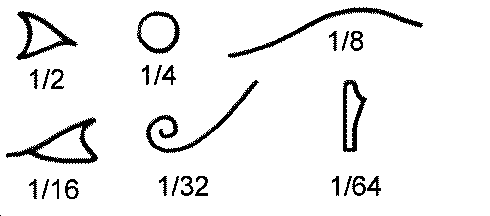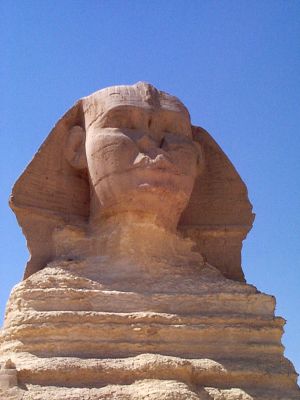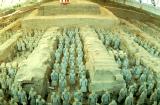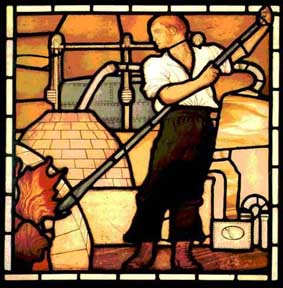
GNED 117
HISTORY OF TECHNOLOGY
Prof. Tim Richardson
Toronto, Canada

GNED 117 HISTORY OF TECHNOLOGY |
Prof. Tim Richardson Toronto, Canada |
TECHNOLOGYis
the application of science to make human lives better.
http://www.bbc.co.uk/education/archive/wheel/dot.htm
HISTORY is the study of past events; sometimes this is determined through a written record, sometimes through archeology.
HISTORY of TECHNOLOGY
is the study of how science was applied, in the past, to advance civilization
and make human lives progressively better.
|
Section One |
|
.
| 1 | introduction
Science and Technology - difference approaches Requirements and aspects of a Technological Society One of the earliest technological
inventions: The Wheel.
Since this class is taught in Canada, which is in North America, it would be respectful of us, when noting primitive technology, to mention the contribution of the North American native peoples.eg. Maple syrup ! canoes ! 
Nativetech is a massive site, you are not expected to view all the links, just look at a few to get an understanding of some of the technologies applied by Native peoples in North America. Long distance navigation
of North American waterways by birchbark canoe had the consequence of allowing
vast areas of the continent to be explored and mapped.
Try searching Yahoo.com or other sites with words like "primitive technology" and you will be frustrated by a lot of false leads to personal web pages put up by survivalists trying to learn neolithic skills cause they fear the coming Y2K deadline. some sites though have interesting topics example http://www.propbuilders.com/wyatt/primlinks.html |
| Class 2
2
|
Africa
and Egypt
|
Egypt - structures and monuments
http://ds.dial.pipex.com/ritson/quest/orion/egyptol.htm A party of French troops found a black basalt slab, near to the town of Rashid in 1799, inscribed in three languages. The slab was a tribute to the Egyptian King Ptolemy V, with the original heiroglyph, a more modern demotic script, and, the key to our knowledge of Ancient Egypt today, a Greek translation alongside carved in 196 BCE. The French returned control of Egypt to the English, and the Rosetta Stone, as it had become known, was taken to London, where it can still be seen as a prize exhibit in the British Museum, in Bloomsbury.
Controvery about the age
of the Sphinx
A reasonable discussion from
the Nova TV series
which tries to estimate the reality of how many people needed to move X
number of stones for building the pyramids
The Egyptian Government's
Official Website on the
The Great Pyramid
Thirty times larger than
the Empire State Building, the Pyramid's features are so large they can
be seen from the Moon.
Some people have very extreme
and unusual theories of the Pyramids.
The Orion Theory
Terrance G. Nevin's web site dedicated to the proposition that the Great Pyramid is a rational (in the mathematical sense) structure, designed and built by normal people. 
|
| 2 | From
the text |
photocopies were handed
out of pages from the text
p. 26-29 which was the first
4 pages of Chpt Three
discussed the concept of
a village
|
| 2 | Group
Discussion  |
For class today you are
going to be a survivor from another time period who is cast away into a
previous period in history.
You will draw on your personal knowledge, and the knowledge of the people in your group, to survive, and a create a sustainable society until you are rescued, or until you life out your remaining years |
| 3 | From
the text |
photocopies were handed
out of pages from the text
p. 30 - 33 which was the
first 5-8th pages of Chpt Three
discussed
|
| 3
3
3 |
Egypt
 |
Egyptian writing vs.
Sumerian writing
- a consequence of the physical environment leading to the development of different methods - in Egypt they had lots of tall reed grasses (papyrus) which they could make in to paper - in Sumeria they began writing in moist clay - which was abundant in the river valleys check page 30 in
Planned irrigation and mass cultivation of crops Crop harvesting and mass storage Egyptian timeline
The writer paints a "generous" portrait" of how the country felt about these projects. http://eyelid.ukonline.co.uk/ancient/pyramid3.htm There are very few internet
references to African technology and buildings and structures, other than
Egypt and the Pyramids. Got to
|
| 3 | Class
Activity "Things they
|
The reason why we do not
all agree on how the pyramids were built is because there are too many
inconsistencies in the theories of who the workers were, the dates involved,
the technology used, the mathematics involved, etc. Although we may not
be able to - even in "modern" times to know how they built the pyramids,
it is possible to develop an interesting list of things they would have
had to deal with.
In class today we also took time in groups to make a list of problems and challenges that the Egyptians would have to overcome in constructing large stone projects like the Sphinx and Great Pyramid. The items on this list - created by our students in class, include considerations in the categories of
|
| . | These links to the right are not required reading, they are offered just for your interest | Ancient Egyptian Virtual
Temple
http://showcase.netins.net/web/ankh/ |
| 3 | African science and technology history | Other than Egypt and its
great structures, little is known about African technology among mainstream
historians - however there are a number of individuals who study different
African technological and engineering contributions to Mediterranean, European
and Middle Eastern civilization
"The story of Africa is marked
by the rise of complex societies (chiefdoms and states), migrations, agriculture
and pastoralism, and particularly diversity. The introduction of iron transformed
the continent because it opened up potentials for agriculture. This led
to expansion of populations accompanied by migration." Read more at, the
web site of Mesa Community College ...
The Iron Age south of the
Sahara.
(steel was invented in the west in the 1700's). "The oral traditions of African kingdoms usually start with a male founder who persuaded or forced people to accept his rule. There are many such legends where the founder-king was a blacksmith signaling the importance of iron in African kingdom evolution"
some miscellaneous information
on ancient Africa
African history web links
|
| Jan
24 Jan
|
Asia, China
|
China's contributions to
the West, shown in an easy to see Timeline
curriculum/china/1996/EACPWorkBook/gift/timeline.htm Chinese writing
- gunpowder
- developed in China in 1000 A.D., introduced into Europe, by the Arabs
in 1360
- astronomy in ancient China,
influenced by India
Su-Sung and Chinese Water
Clocks 1094 A.D.
|
| Jan
24 Jan
|
Asia, China
|
Chinese Civil Engineering
A video on Chinese Bridge Building This video discusses bridge
building as it was during the Song dynasty.
During the time of the Song
Dynasty there was a massive population increase which caused 2 related
revolutions
The ability of the country
to expand was linked to the rivers
China had lots of forests
so wood was available for making houses
"Rainbow Bridge" the people in the video tried
to recreat the "Rainbow Bridge" which was based on a drawing in an old
Chinese painting
Foundations of an Arch are
different than a Span
In the video they research the properties of hemp rope versus bamboo rope and test bamboo rope for use in binding the members of the "Rainbow Bridge". As part of their research, they construct a small suspension bridge made of twisted bamboo rope. Video also shows Chinese
history in stone bridge construction
Stone Arches
|
| Jan
24 Jan
|

Asia, China |
- first, check the China
maps page at
Master Web page with links
from the University of Maryland
China, as we recognize it
today was unified for the first time in 221 B.C. The
western frontier state of Qin conquered its neighbours and the leader of
Qin titled himself as the First Emperor.
They built a series of four walls to keep out enemies and when the walls
were linked, it became referred to as The Great Wall.
- a very good brief
summary of the Silk Road
|
| 5 |
Japan |

www.easc.indiana.edu/pages/easc/curriculum/japan/1996/general/japan2.gif - from Indiana University, East Asian Studies Center This one page from Indiana State Univ provides a helpful timeline of major events in Japanese history One of the things limiting
an understanding of ancient Japanese technology uses is the state of Japanese
archeology.
Japanese Castles
|
| 5 | 
|
Much of Japanese
technology developed from military technology which had to do with feudal
wars between the clans.
- swords and steelmaking John Lienhard's short commentary
about
Example of how one technology allows another technology to develop: A skilled plane (or trimming
wood flat and smooth) was introduced from China, to Japan in the 12th Century.
The good plane made flat surfaces of boards possible, and thus, wooden
bellows could be made securely air-tightened The good wooden bellows were
a kind of revolution in
|
| 5 | Biography
Assignment |
You are required to show
the professor the name of the person you have chosen for your biography,
and identify what sources and resources (online and offline) you have accessed,
in order to find the information and complete the assignment.
http://www.witiger.com/centennialcollege/GNED117/assig117.htm |
.
Peter Landry of Nova Scotia
has a huge web site werein there is an alphabetically ordered list of all
the major scientists throughout history
Go to: http://www.blupete.com/Literature/Biographies/Science/Scients.htm#L
 |
Written and hosted by John Lienhard and KUHF-FM, Houston, Texas: The Engines of Our Ingenuity was a series of radio broadcasts which have now been turned into web pages. Quite a number of these pages contain topics which are discussed in our course outline for GNED 117. |
| Chronology of Events Related to Technology
- a 7 page timeline |
compiled by
Professor Stephen Dutch University of Wisconsin - Green Bay http://gbms01.uwgb.edu/~dutchs/190outln/CHRONO.HTM |
 |
Dr. Silvestri has a massive web site that covers, chapter by chapter, Ancient World history. If you want to know about a particular period, here is a good place to look for simple facts in a good timeline order. |
 |
Spartacus Internet Encyclopedia
of British History 1700 - 1900
Contains excellent links to topics related to the Industrial Revolution and has a list of Scientists and Engineers |
 |
Massive web site with links
to virtually all areas of world history
- ancient/medieval history - African history - Chinese history - History of transportation technology - Historical buildings |
 |
With so many people worried about Y2K, there a number of sites on the WWW devoted to primitive technologies that people are interested in learning about - in case we get zapped back to the stone age and have to live without any modern technology. Anyway, this American site has interesting links to primitive technology web pages. This is listed here for your personal interest and is not part of the core outline of GNED 117. |
 |
"... of interest to students
and collectors of European Dark and Middle Ages swords
and other edged weapons, with a particular focus on the swords of the Viking Age." This is listed here for your personal interest and is not part of the core outline of GNED 117. |